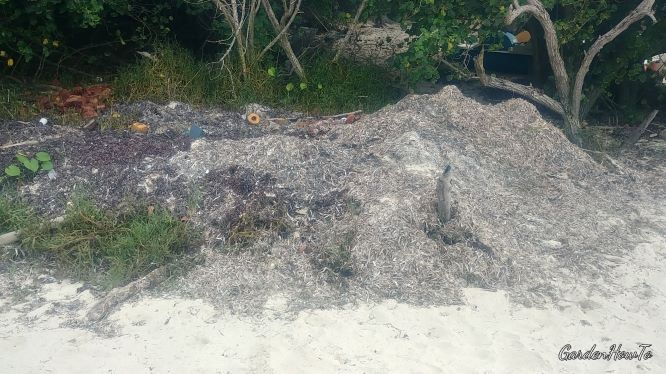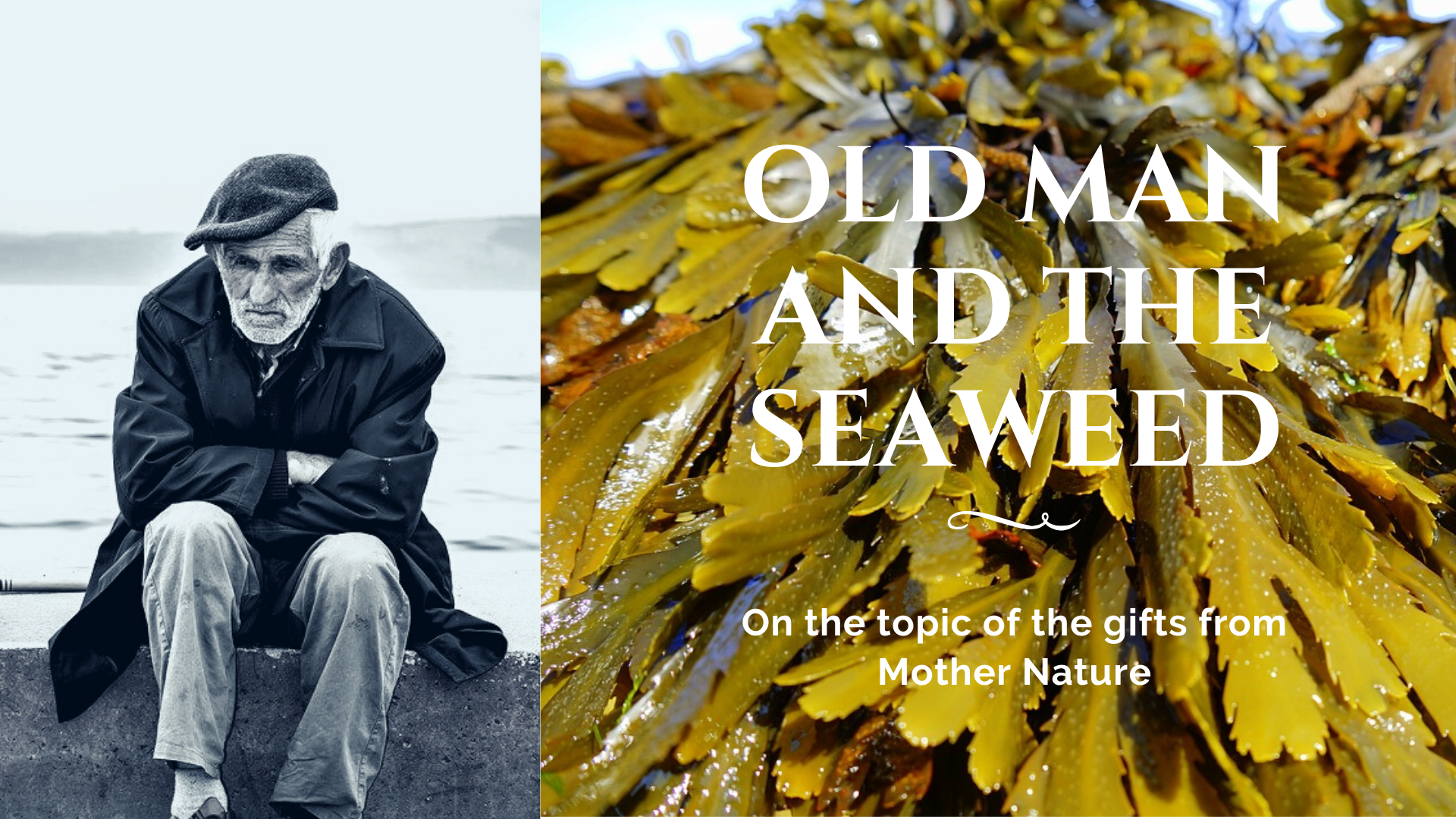I stayed on the grounds of a resort in Cuba for a week. Here is an experience that resonated with me so much I decided to share it with you.
Every morning around 7 a.m, I went to the ocean for a short swim. There were local workers who cleaned the beach by raking the seaweed that had been brought to the shore by the tide. The amount of seaweed became greater whenever overnight weather was windy resulting in high waves. Of course, this spoiled the cleanliness of the beach and workers had to come early in the morning and make the beach more attractive to tourists.

I then wondered – what do they do with the seaweed? I had noticed piles of seaweed placed near the bushes at the neighbouring resort, unlike the workers at our resort.

Subsequently, I started to pay closer attention and observed that the workers carried out a spade with them and collected the seaweed in the small piles every 5 meters or so. Then they dropped the rake, dug a hole in the sand right in the middle of the beach and buried the seaweed. Smart, eh? This way, the seaweed would be composted beneath the sand and recycled by the natural ecosystem.
Little did the workers understand how nutritious seaweed is for the soil to grow plants and in particular, edible crops.
This practice may have been done out of the business interests of the all-inclusive resort. But it became obvious to me how easily we ignore the treasures given by Mother Nature, whose gifts we can use to our advantage.
On another occasion, I took a walk outside the tourist grounds on the ‘less clean’ beach and I was surprised to see local people standing in the shade and waiting for something in anticipation, similar to people waiting for a bus to arrive. I walked near the water and stopped to take in the views, where a nearby island was visible. This beach was not as beautiful as the one inside the resort area. Actually, there was more seaweed around too. Of course, there was nobody to clean the seaweed out ;).
A man in his 60’s approached me from the bushes and with a kind smile on his face began speaking to me in, of course, Spanish. With my very limited Spanish knowledge, I listened as he spoke about the greatness of Cuba and its constant warm weather, his difficult life and a very small pension, and all other matters that I could not understand. I answered the best I could in whatever language I was able given my very limited Español. Then, very carefully and in a hesitant manner, he asked if I could donate some clothing…
I agreed to bring some shirts and whatever I could find from the resort. But…
Since I am obsessed with growing food wherever possible I thought … how can I help him and his family in a bigger way? Of course, I understand that clothing is necessary but the food is more important. Our ancestors lived without clothing in prehistoric times when food was their highest priority anyway. Without food, they wouldn’t live long. So where could this family get their food from?
The man invited me to walk with him back toward the bushes where he introduced me to his family that lived there, on the beach. If I understood correctly, they had no house and no work. They stayed on the beach all day and slept in a tent at night. They cooked on an open fire the food they were able to obtain. The man was about 67, his wife around her late 50’s, and they had an adult son.
I challenged myself to show him how he could grow his own food right where they lived. Would it be possible to find a piece of land in the bushes to create a garden bed? Or maybe find a small open field free from plentiful wild vegetation? I noticed a patch of land at the back end of the sandy area where the flora began spreading out and a possible place to experiment on. I wondered if it would be possible to keep the seedlings and plants untouched by animals? What seed or plant could I find to get the growing started? The soil at close proximity to the beach might not be fertile enough for edible plants to grow and produce a harvest. But I believed it was worth the effort to try. Especially when the nutritious seaweed is quite abundant in the surrounding area. Why not collect the seaweed and grow vegetable plants in a similar manner as people who cultivate in straw bales without any soil added? How about mixing the seaweed up with the soil and plant into this mix? You don’t have to process the seaweed in any way and I thought it would be fun to try and see what grows and go from there.
Are you still wondering how all of this is related to growing your own food? Quite directly actually.
We often ignore the gold buried underfoot. We complain that our soil is terrible, our growing season is short and our weather is cold. We dispose of our food waste into the green bins, we rake the leaves from the lawns and pack them into the yard waste paper bags for the garbage trucks for pick up. Why would not recycle fallen Autumn leaves in our yards?
Oh, and by the way; Christmas is over and pretty soon you will see the recently decorated conifer trees dumped on the curbs. That’s what the city wants us to do, right? Not necessarily, mind you. Here are some great reasons why you might consider recycling your Christmas tree without any help from the city.
And then we bring home bags of compost from the Home Depot, spread the content around the garden beds, don’t see much of a difference in the greens that pop up here or there and say “Nah, it is very expensive to grow your own veggies, I’d better buy polished potatoes from Costco”. Does it sound like you?
Yeah, I know, I’ve been there too. Yet in childhood, I was quite puzzled why we have to burn all the dead branches and dried weeds after the harvesting was over??? Of course, I did like playing with fire as a normal boy would but that regular yearly burning practice honestly made no sense to me.
I question the same on collecting the seaweed and throwing it out as garbage, completely ignoring how valuable seaweed is as a resource with its nourishment of the soil allowing better growth of veggies.
But so that you would not think that I get ‘high’ from the seaweed let me show you some proofs on how seaweed is beneficial in gardening. For example, in this article the author describes in detail how seaweed could be used in your garden as mulch, as a pest-repellent tea, and how seaweed is a great addition to the compost along with many more applications:
https://learn.eartheasy.com/articles/how-to-use-seaweed-to-mulch-your-garden/
Another great link, if you still have any doubts as to how seaweed is valuable in any shape or form, is to this article from ‘No Digs Vegetable Garden’ site:
https://www.no-dig-vegetablegarden.com/seaweed-fertilizer.html
And, finally, when you get tired of reading and ready to make your hands dirty, check this article with practical tips from Erik Hoffner:
https://grist.org/article/kelp-on-the-way/

